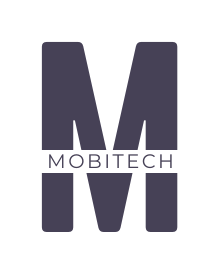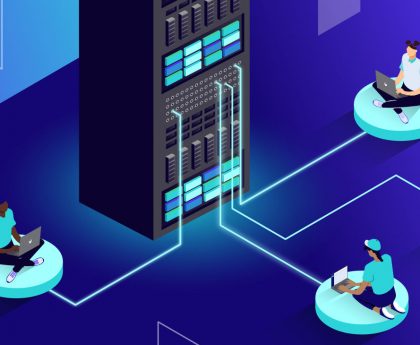HR is an important component of any organization. It performs many functions, including recruitment, payroll, training, and health and safety. There is a lot of work to do in HR. Many companies, such as human resource management software, invest in technology to help them with their HR operations. These systems will be an investment, and they will cost money. However, companies can save time and money over the long term because HR functions can be performed more efficiently and effectively with human resource management systems.
There are many HRMS on the market. Each one has different functions and features. You must choose the right one.
What’s a Human Resource Management System?
An HRMS (human resource management system) is a software or system that manages many HR functions and processes within an organization. These functions include payroll, onboarding, attendance, performance, offboarding, etc.
Its purpose is to make the lives of those responsible for HR in a company easier.
This makes it easier for employees to use the system. It’s not uncommon for them to offer self-service so that employees can complete their tasks at their own pace.
The company’s human resource management system streamlines its HR operations by automating and completing them more efficiently. The HR manager and his team can now focus on more important matters and not just routine administrative tasks that can be done more efficiently by an HRMS. There are many types of HRMS. Each type has different functions and features. Learning about some of these features and how they can benefit your organization might be useful.
Functions and Features of the Human Resource Management System
Every HR management system on the market is different, making it difficult for businesses to select the right one for their needs. It is important to determine the features needed in Human Resource Management System. This will help you narrow your search. What exactly do you need the software or system to do? What specific functions do you need for your company?
Here are some common functions and features of Human Resource Management System. Which one would you choose to be most useful for your organization?
Recruitment
Recruitment is a common function in human resource management systems. This module is usually a part of the software that supports the company’s recruiting process in many ways.
Take, for example:
- Automated sort through potential candidates and applications using a set of criteria and applicant tracking
- Employers can access internal vacancies via the Human Resource Management System to make internal recruitment more efficient
- Ensure that you manage candidates through the entire process, including interviews
Onboarding
Onboarding features are another way HRMS can help support HR operations. These features enable organisations to provide a smoother, more efficient onboarding experience for both the employer and the employee.
Take, for example:
- Automated checklists for onboard ensure that all is covered
- It can make it easier to collect new employee information if the employee uses the self-service option.
- The HRMS allows you to process documents electronically.
Compensation
Human resource management systems can make it easier to manage employee compensation.
Take, for example:
- HRMS will simplify payroll processing and management and is less likely to be error-free.
- Employees should be able to access their documents, e.g. Pay slips
- Administration of salary and benefits
Performance
Performance is another common function of human resources management systems. These HRMS performance-related functions can help you monitor employee and company performance and ensure everything is in order.
Take, for example:
- Employees can access one platform that allows them to perform performance reviews.
- It’s easy to schedule and organize one-on-one meetings
- Supervisors and managers can provide real-time feedback to employees
Offboarding
HRMS software can make onboarding easier for both the employee and the employer. In preparation for an employee’s departure, ensure everything is done efficiently.
Take, for example:
- Automated checklists for seamless offboarding
- It’s easy to plan and organize exit interviews and exit surveys.
- It is easy to manage all documents required for offboarding, e.g. resignation letters.
Training
The training function is another function that HRMS can provide for companies. This includes all features that help employees develop and train.
Take, for example:
- Employees should have access to tailored training programs tailored to their specific needs.
- An online learning platform for employees to learn and improve their skills.
- Employees can complete online assessments easily
- Notifications and reminders for training
Database
Human resource management systems have a common function: they can be used to store data in a database. The HRMS stores all data in one place.
Take, for example:
- Cloud-based storage
- Data Management as Required
- With ease, collect and store information about employees
Attendance
There are several attendance-related features that you should look for if you are looking for an HR management software system that can track employee attendance and time.
Take, for example:
- Automatically register employees’ attendance using the Attendance Tracking feature
- Plan and schedule shifts easily
- Prepare for the unexpected absence of employees.
- Employees can self-check-in or out.
Self-service
Many HRMS offer self-service features that allow employees to perform specific tasks on the system at their convenience. This can save time and can make it very efficient.
Take, for example:
- Employees can manage their self-service portal through a self-service portal
- Employees have the right to access and make changes to their personal information.
- Employees should be able to access documents like payslips
- Requests for time-off
Analytics
Many human resource management systems have analytics and data features. This feature is useful for conducting analysis and providing insights into various HR functions within an organisation.
Take, for example:
- Visual reports make it easier to understand data
- Data analysis can be used to improve business strategies
- Trend analysis for future decision-making
Benefits of HRMS
As more HR functions and processes are added to the digital world, HR operations have become increasingly complex. HRMS can prove to be beneficial for organisations.
Here are some of the benefits.
Completes routine HR tasks
Human resource management systems allow routine tasks to be performed by the system rather than the HR team. This simplifies the HR process, improves efficiency and allows for standardised forms and reports. This reduces paperwork and speeds up the creation of documents. They can be created and completed online. HRMS has one major benefit: it saves time so that HR can concentrate on other tasks.
Self-service portal for employees
HRMS allows employees to manage their information by adding or changing personal details to the centralised database. Employees may also be able to upload documents, such as doctor notes, and book time off. The self-service portal increases employee satisfaction and makes it easier for them to manage their accounts.
Improves employee development
Employee development can be tracked, such as the training sessions completed by employees, the certificates/qualifications earned, and the outcome of their performance reviews. When employees are not performing well, the human resource management system can send them notifications. These notifications will show which development program they are on and how they meet their goals.
Monitoring key performance indicators (KPIs).
The best HR software allows you to monitor key metrics and make them visible and measurable in real time. The HRMS system can analyze employee retention to identify trends and assess retention strategies. Absenteeism can also be tracked within the HRMS system. This can be used to assess the impact of absent employees on the business.
Central data storage
HRMS is a central database that stores all employee data. This system protects personal data from hackers, as well as any unauthorized users. Cloud software can back up the data, so it is never lost.
5 Steps to Select an HRMS
This step-by-step guide will help you choose the best HRMS software for your company.
Step 1: Define your HR needs
Understanding the HR challenges facing your company is essential. Identifying your requirements and deciding what features and functions you need from a Human Resource Management System are important.
Step 2: Liaise with IT Department
Your IT department should be involved to get their opinion on which HRMS is best suited for the company’s IT infrastructure. Your IT department will be able to tell you which HRMS is not compatible with your business. This will help narrow down the search.
Step 3: Set the Budget
The budget must be established. The budget should include the maximum and minimum amount the company is willing to spend on such an investment. Before moving to the next stage, management must approve the budget.
Step 4: Create a Shortlist
The next step is to narrow down your search to a few vendors. You will need to narrow your search to a few vendors that meet your criteria. A shortlist of at least three vendors within your budget is recommended.
Step 5 – Purchase the HRMS
It is necessary to make a purchase decision. After you have made your decision, you can start the process of purchasing the system. Your IT department will assist you in implementing it.
Once implemented, an Human Resource Management System can greatly improve your HR process’s efficiency and streamline communication between top management and the lower ranks. The results will exceed your expectations if you take the time to understand each step before choosing a system.
Also Read: How to Run Your Handyman Business Entirely From Your Smartphone





